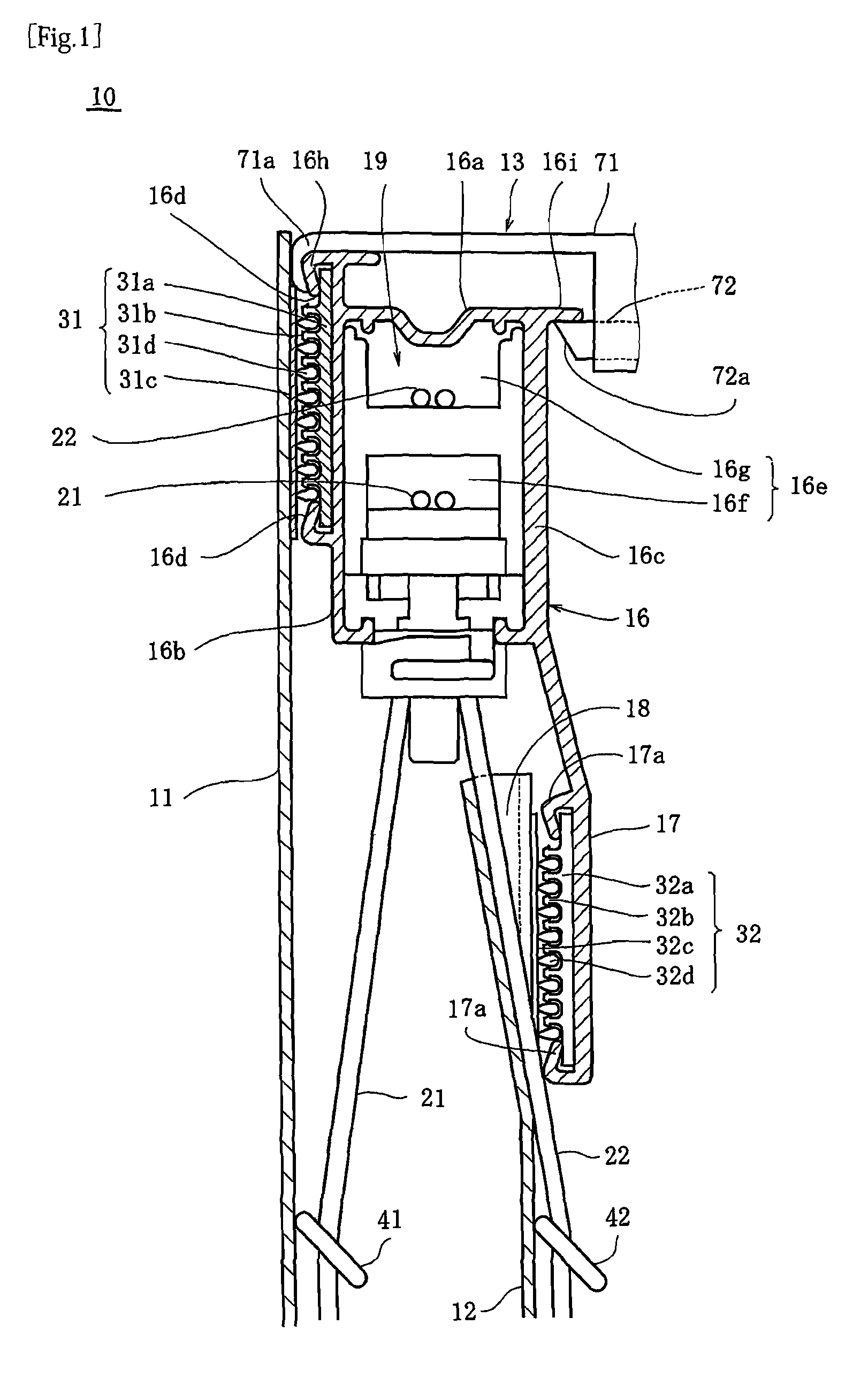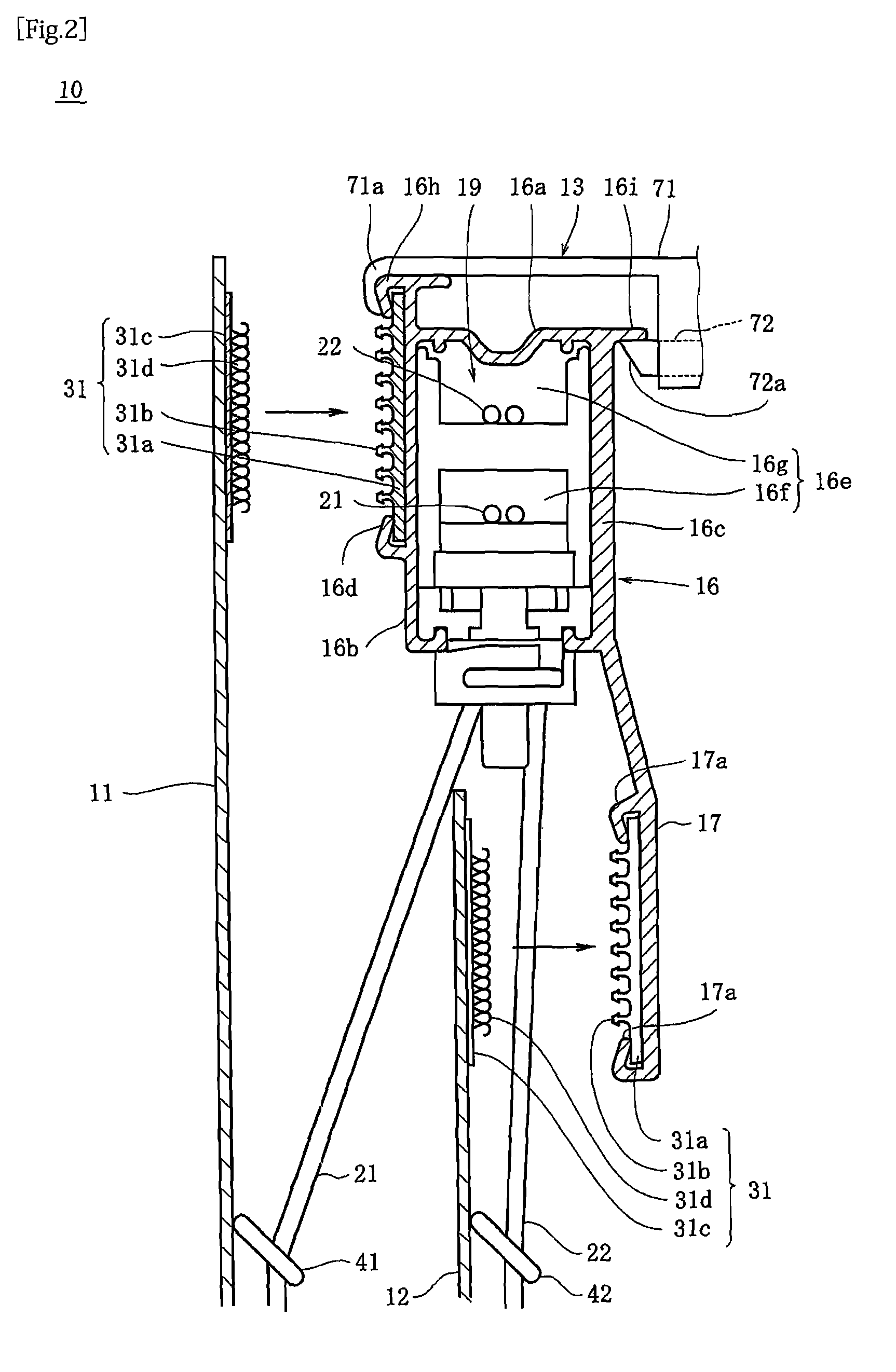Roman shade
a shade and roman technology, applied in the field of roman shades, can solve the problems of increasing the number of manufacturing steps affecting and requiring a relatively large number of manufacturing steps to attach the upper end of the second fabric, so as to reduce the operation load upon lifting up/down the second fabric, increase the number of manufacturing steps, and reduce the appearance of the second fabri
- Summary
- Abstract
- Description
- Claims
- Application Information
AI Technical Summary
Benefits of technology
Problems solved by technology
Method used
Image
Examples
Embodiment Construction
[0042]Now, an embodiment for carrying out the present invention will be described with reference to the accompanying drawings.
[0043]As shown in FIGS. 1 and 4, a roman shade 10 includes: a head rail 16 mounted onto a wall surface 14 of a room through a fixing bracket 13; a first fabric 11 and a second fabric 12 of which upper ends are attached to the head rail 16, respectively, and which have substantially the same length as that of the head rail 16; and a first lift cord 21 and a second lift cord 22 suspended from the head rail 16 in a liftable manner and coupled to the first fabric 11 and the second fabric 12, respectively. The head rail 16 is formed into a reverse U-shape in cross section by means of an extrusion molding or a pultrusion molding for metal such as an aluminum alloy, and has a top plate portion 16a, a front wall 16b suspended from a front edge of the top plate portion 16a, and a rear wall 16c suspended from a rear edge of the top plate portion 16a.
[0044]As shown in ...
PUM
 Login to View More
Login to View More Abstract
Description
Claims
Application Information
 Login to View More
Login to View More - R&D
- Intellectual Property
- Life Sciences
- Materials
- Tech Scout
- Unparalleled Data Quality
- Higher Quality Content
- 60% Fewer Hallucinations
Browse by: Latest US Patents, China's latest patents, Technical Efficacy Thesaurus, Application Domain, Technology Topic, Popular Technical Reports.
© 2025 PatSnap. All rights reserved.Legal|Privacy policy|Modern Slavery Act Transparency Statement|Sitemap|About US| Contact US: help@patsnap.com



